Infrared heating of a private house: an overview of modern infrared heating systems
Efficiency and profitability are key parameters when choosing a heating system. The price of energy is quite high, their zealous owners of apartments and private houses are trying reasonably. These two parameters underlie the development of an innovative infrared heating system.
The article we have proposed will help you find out how infrared heating of a private house works. We will tell you how and how you can set up IR heating. You will learn what equipment is needed to achieve the intended goal and how to fix it.
For you, we have collected and systematized all the information about the types of infrared heating systems and the criteria for their selection. For visual perception attached photo-collections, informative schemes and video presentations.
The content of the article:
The principle of infrared heating
In nature, infrared radiation enters the spectral region of electromagnetic waves emitted by the main "luminary" of our system - the Sun. Thanks to the invisible wave spectrum emitted by it on our planet, all living things are capable of developing.
Scientists infrared radiation, which is referred to as "thermal", is divided into three components, highlighting the near, middle and far spectrum.
The most effective for heating and the safest for living organisms are electromagnetic waves immediately following the visible red side of the middle spectrum.
The range of wavelengths of radiation, called "rays of life", ranges from 8 to 14 microns. In a number of sources, the “life-giving” interval is slightly increased: from 6 to 20 microns. However, even these discrepancies in the testimony are not critical.
It is the long-wave spectrum, which is close in value to the radiation of the human body, is involved in the development of equipment and the arrangement of the heating system with infrared heaters.

Infrared installations can be considered a kind of mini-sun. The only difference from the natural "luminary" is that they will warm up the space constantly, regardless of weather conditions outside the room. Such installations work in everyday life from a 220V network.
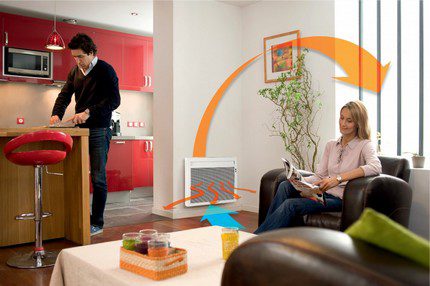
The heater, which is the main component of the device, propagates light waves. Thanks to the reflector, during the operation of the equipment, the object to which the device is directed is warmed up.
The role of “receivers” and then “emitters” of heat can be performed by any objects in the room: ceramic and stone objects, wooden and glass surfaces, living organisms.
Items take heat or transfer it to a nearby space. In the process of equipment operation, the surfaces of interior items in the radiation zone are 7-10 degrees warmer than ambient air.
Infrared heating is perfectly combined with other traditional heating methods, making it easy to organize a "heat island" - a zone of increased comfort in any room with minimal effort.
Both at the household level and on an industrial scale, this type of heating is convenient to use as auxiliary or emergency heating. Heat losses during its use on average do not exceed 10%.
Advantages and disadvantages of the system
The heating system based on infrared radiation in comparison with convection heating methods has a number of indisputable advantages:
- Wide range of applications. Infrared heating panels are used for heating rooms of all types.With their help, they increase the temperature in warehouses, livestock farms, in utility rooms and in garages.
- High heating rate. The feeling of thermal comfort from the moment you turn on the equipment comes in a matter of minutes. This is due to the fact that air does not absorb thermal radiation, and energy is consumed for its intended purpose with minimal loss. And even after turning off the device for some time, it will continue to radiate heat.
- Silent work. The operation of the heaters is not accompanied by any vibration and noise, and during the heating process no combustion products are emitted.
- Safety for household health. By nature, infrared heat is as close to the sun as possible. It is the most comfortable for humans. The devices used do not emit an unpleasant odor, do not emit toxins and harmful substances, being absolutely safe for human health.
Heaters of this type are not afraid of moisture. Thereby infrared devices it can be safely used for arranging “islets of heat” in the open air, used for heating a garden gazebo and a veranda.

Unlike spiral heaters, infrared systems do not burn oxygen out of air and do not dry it. The distribution of heat in the room is carried out evenly without accumulation in the upper half, closer to the ceiling, of the room.
And in the process of heating, convection air flows that are capable of raising dust are not involved. Thanks to this, it is possible to maintain a constant microclimate, providing conditions for a comfortable stay of households.
Heaters are placed in the floor, ceiling or simply attached to existing ceilings. They are often used in the arrangement of the "smart home" system.
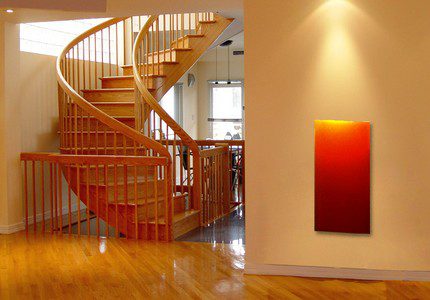
An argument in favor of the modern system is the fact that in recent years infrared saunas are gaining more and more popularity among connoisseurs of spa treatments.
According to research by Japanese scientists, they are an excellent prevention of many diseases. Penetrating under human skin, the rays warm the blood vessels, thereby contributing to the rapid spread of heat throughout the body.
But the infrared heating system is not without drawbacks. These include:
- Infrared rays have a point effect. Therefore, within one spacious room in one place it may be too warm, in another, on the contrary - it is cool.
- Since infrared rays do not heat up air, but objects, during the heating of the room, the interior of which is made up of objects of technology, a subtle smell of plastic may appear.
- In terms of aesthetics, these pendant heaters are far from always able to fit into the overall interior design.
Pretty energy efficient infrared heating fully cannot be considered economically viable. First, a significant amount will initially have to be invested in the equipment itself.
Secondly, in order to achieve rational energy consumption with its help, you will have to spend money on meeting a number of key requirements. For example: insulation of a building, arrangement of heat-reflecting reflective screens.
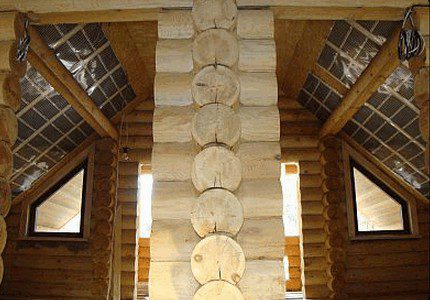
But subject to all the necessary installation conditions, the efficiency of the system can reach the mark of 95%. And to maintain a comfortable microclimate it is enough that the film coating occupies 50% of the surface of walls or floors.
Varieties of infrared heaters
The modern industry for the infrared heating system produces two types of heaters: the film version and the panel version.

The differences between film and panel emitters are only in design features. When arranging infrared ceiling heating, both film emitters and panels are used.
But for heating the floor, only film-type equipment is used.
No. 1 - panel heaters
Flat heating panels are good in that they allow you to save the living space with a constant height of the room. This is very convenient when arranging rooms with low walls and sloping ceilings.
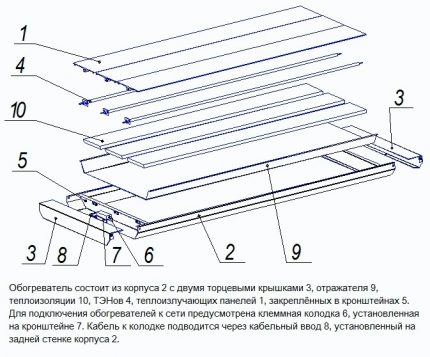
Structurally, such devices include the following main elements:
- TEN - a heating element;
- panelreceiving heat from the heater and transmitting energy to heated objects;
- insulationlocated on the back side, preventing the loss of thermal energy;
- plate - reflecting electromagnetic waves from the back of the device;
- cable entry housing, terminal block, etc.
The material for the manufacture of the heater can be ceramic, quartz or tungsten. The material used largely determines the power and efficiency of the equipment as a whole. On top of the heater is covered with a decorative coating, which serves as the emitter of infrared waves.
Depending on the installation method, the panels are built-in and mounted. The first are plasterboard structures with thermal insulation applied to them and built-in graphite thread.
The body of the hinged panels is made of heat-resistant plastic or glass, and the heating element is covered with a screen made of ceramic or anodized aluminum.

Such heaters for sale are presented in the form of traditional panels and more refined models, decorated in stone or natural wood. Exquisite designer products are able to make a worthy addition to the interior.
No. 2 - film type emitters
Film heaters are most often used if necessary to organize zone heating. For example, when arranging a loggia, arranging a working area or creating a corner for relaxing on the veranda.
Coatings of this type can be placed both on the floor and on the ceiling with walls. The only exceptions are stretch ceilings made of fabric or PVC cloths. For suspended ceilings, manufacturers offer cassette-type infrared emitters.
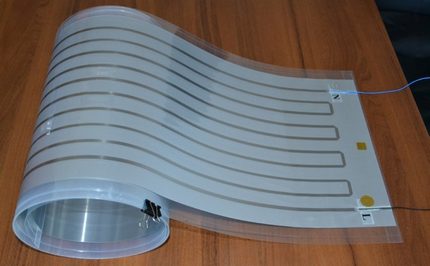
The main material of the system is a thin layer of graphite deposited on a thin film of thermoplastic or carbon fibers laid in parallel, which produce heat flow when heated.
Film coatings consist of interchangeable modules, so if a separate section is out of order it will not be difficult to replace it with a new one, without violating the integrity of the system.
To give film heating systems more presentable appearance, some craftsmen equip them with decor. To do this, first, a drywall frame is built over the coating, on top of which a decorative finish is applied. The only condition is that it does not contain metal.

In advanced versions, IR heating film systems are mounted under a layer of decorative finish. Decoratively designed film heaters are among the low-power devices and therefore are mainly used for local heating of one of the sections of the room.
Classification by the way elements are arranged
Infrared heating devices are on the market in a wide range. By the method of arrangement of heating elements, they can be divided into three groups: floor, wall and ceiling.
Option # 1 - floor heaters
Floor coverings are modular materials, inside which are laid flat heating elements. The coating is available in the form of rolls. For installation, it is cut into pieces of the required size.

Insulation material and infrared film stack directly to the prepared base floor. In the process of laying, the overlapping of the panels is avoided and they try to maintain a distance to the walls of 10-15 cm.
On top of floor infrared strips you can stack:
- carpet;
- parquet board;
- linoleum;
- laminate;
- ceramic tile.
The most successful combination is obtained when ceramic tiles are used as flooring. Laminate is slightly inferior in this regard. And the greatest shielding of infrared radiation creates carpet and linoleum.
Film systems are installed not only on floors, but also on ceilings under hinged structures and slopes of the attic roof. Installation and connection is carried out according to a similar scheme:
Infrared heating systems include not only film options, but also carbon core floors. Introduces the rules for their installation popular article our site.
Option # 2 - wall and ceiling fixtures
In comparison with floor heating systems, the choice of ceiling and wall devices is wider. In addition to traditional panels, there are also designer built-in models of ceiling emitters.
They can be mounted in suspended ceilings. On sale, they are presented in different sizes and colors.

Ceiling models of infrared emitters are located at a height of 3 meters and above. With this arrangement, the heat ceiling goes down and diverges slightly to the sides.
Rushing down, the rays first heat up the floor covering. Due to this, the temperature at the level of the legs is always a couple of degrees higher than in the region of the head. To prevent heat from seeping into the street, panels are not placed opposite doors and window openings.
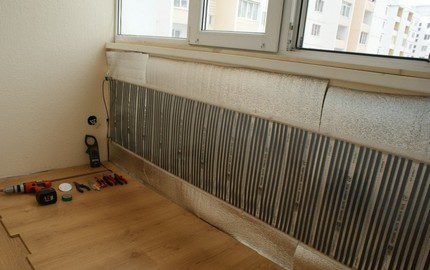
Among wall radiators, it is worth highlighting skirting systems.They are narrow long structures. Systems are installed around the perimeter of the room, placing instead of the usual plastic or wooden skirting boards.
When choosing a place to place the panels, you should avoid recreation areas, where there is a high probability of direct impact on households. For example: at the level of a sofa or bed.
Otherwise, the rays directed at right angles will overheat and dry the skin, causing discomfort for residents and guests of the house. The coverage area of directional emitters is one of the main characteristics and is usually indicated in the passport to the product.

IR heater manufacturers
The production of infrared equipment is engaged in many companies around the world. Among foreign manufacturers, the most popular are:
- STIEBEL ELTRON - A German company that produces products of traditionally high quality;
- FENIX TRADING - a Czech company pays close attention to the issue of energy efficiency of products being created;
- "AIR COMFORT" - The Italian concern relies on creating a safe heating system of a new generation;
- "FRICO" - The Swedish manufacturer guarantees Scandinavian quality and places high demands on the design of products.
Domestic manufacturers are represented by such brands as Bilyuks, "Peony", EcoLine, Almak. In terms of quality characteristics, the products of these brands are not much inferior to imported counterparts.
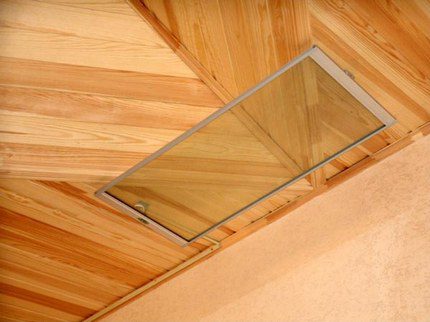
But it is worth noting that not all of them domestic appliances for infrared heating are supplied complete with brackets. In addition, judging by the reviews, the work of domestic devices is often accompanied by a slight crackle, which can be annoying especially at night.
Caution should also apply to products made in China. Some companies put a “CE"Denoting"China export". Visually, this abbreviation is similar to a sign of compliance with European requirements "CE"Denoting"Conformite Europeenne».
The only difference is that in the second case, the font density is slightly wider and the letters are located a little further from each other. Therefore, in addition to studying labeling, require certificates of conformity.
Competent equipment selection criteria
The main thing you should focus on when choosing heating elements is their constructive solution and operational parameters. To calculate the optimal power, use the classic formula, taking as the basis that an average of 1.2 kW is required to heat 10 meters of area.
Meet on sale and mobile installationsthat are convenient to use for temporary heating, placing in the right place and, if necessary, taking to the site. They work both from electricity and gas.
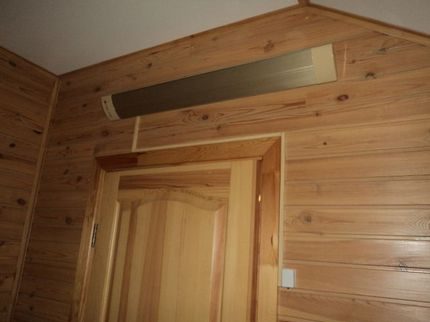
If we compare the models of floor and ceiling types, the difference between them will not be significant, since in any case, the floor and the lower part of the walls will be heated first, and warm air will still rise upward. For this reason, look only at how convenient it will be to place the equipment on the ceiling or floor.
Models with a built-in temperature sensor are convenient in operation: when the temperature in the room drops below the set point, the equipment automatically turns on, and when it reaches the set value, it turns off.
Preference should also be given to devices whose design allows you to adjust the slope of the radiation direction.
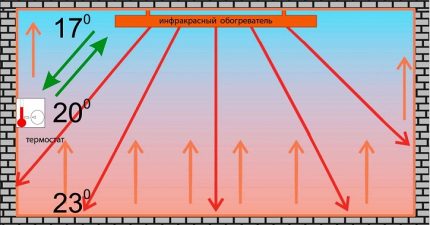
In general, when choosing heating elements, you need to be guided by the parameters of the product, the materials from which the house is built, the presence of a different type of heating system, and, of course, your financial capabilities.
But do not be tempted by products with unreasonably low cost. In an effort to reduce the cost of production, some manufacturers do this at the expense of quality, saving on contacts and using low-quality wires.
Conclusions and useful video on the topic
Video # 1. A good example of a heating system:
Video # 2. Film IR heating: pros and cons:
Video # 3. Overview of ceramic heating panels:
The infrared system is a safe heating technology of a new generation, which, with a competent approach, can become an economical and rational option. Moreover, both as a zonal and in the role of the main heating of a private house.
Have questions in the process of getting acquainted with the article? Do you want to share useful information or tell about the experience of using IR systems? Please write comments in the block below, created for communication between site visitors.

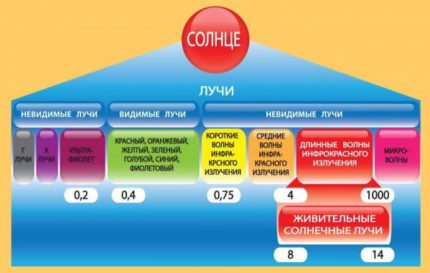
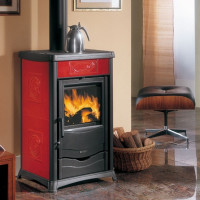 Autonomous gas heating of a private house: device options and an overview of the best solutions
Autonomous gas heating of a private house: device options and an overview of the best solutions 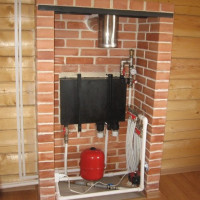 How to arrange heating a private house without gas: the organization of the system in a wooden building
How to arrange heating a private house without gas: the organization of the system in a wooden building  Electric heating in a private house: an overview of the best types of electric heating systems
Electric heating in a private house: an overview of the best types of electric heating systems  How to save gas when heating a private house: an overview of the best ways to save gas
How to save gas when heating a private house: an overview of the best ways to save gas  Heating from an electric boiler: options for organizing heating based on an electric boiler
Heating from an electric boiler: options for organizing heating based on an electric boiler 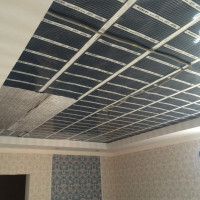 PLEN heating system: specifics of infrared film heating
PLEN heating system: specifics of infrared film heating  How much does it cost to connect gas to a private house: the price of organizing gas supply
How much does it cost to connect gas to a private house: the price of organizing gas supply  The best washing machines with dryer: model rating and customer tips
The best washing machines with dryer: model rating and customer tips  What is the color temperature of light and the nuances of choosing the temperature of the lamps to suit your needs
What is the color temperature of light and the nuances of choosing the temperature of the lamps to suit your needs  Replacement of a geyser in an apartment: replacement paperwork + basic norms and requirements
Replacement of a geyser in an apartment: replacement paperwork + basic norms and requirements
For the cottage chose this type of heating. For the price of operation it comes out profitably. The warmth from them is pleasant, without the feeling of a draft and odors. There are also drawbacks: you need to make sure that in no case is it aimed at a motionless person sleeping, for example, or working, because it can overheat quite unpleasantly. We hang above the entrance to the rooms, optimally, in my opinion.
What can I say about this, infrared heating is, of course, the idea is not bad, which is the place to be. But this must be very confused, in order to organize this in the house. Well, and you need to do this before finishing. Suppose, if you put the same infrared panels, they will not warm up the house so much. At one time I used an infrared heater, so the heat was only near it, it was worth moving 2 meters further, the heat was no longer felt. How to deal with this?
I wanted to set myself such a heating at one time when I found out that football stadiums are heated by them in winter. But, according to people, in the house it is only as additional heating.
Hello. With proper distribution of panels, such heating is quite possible. It is necessary to conduct thermal engineering calculations of their arrangement and quantity.